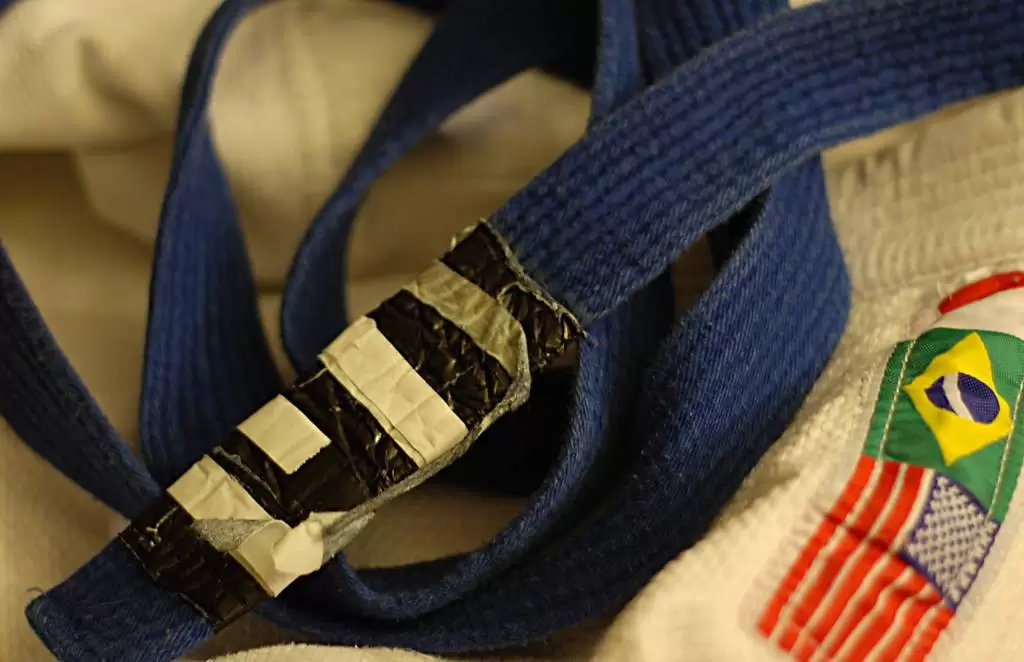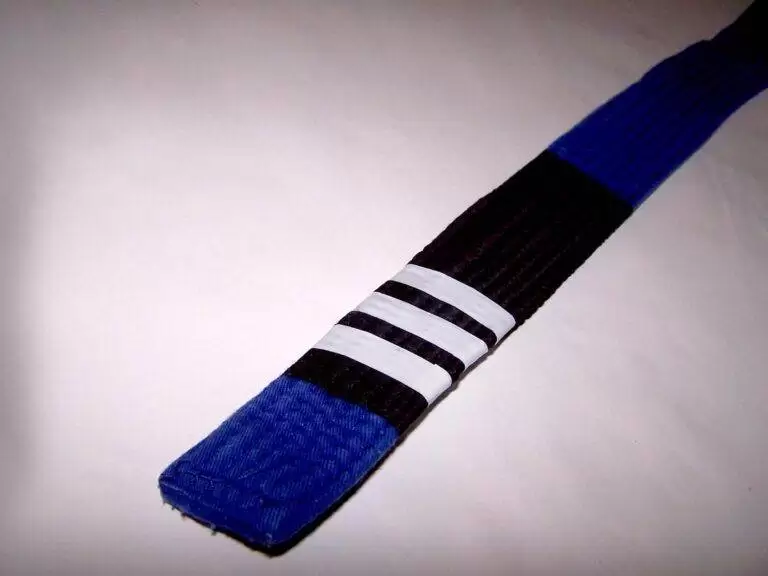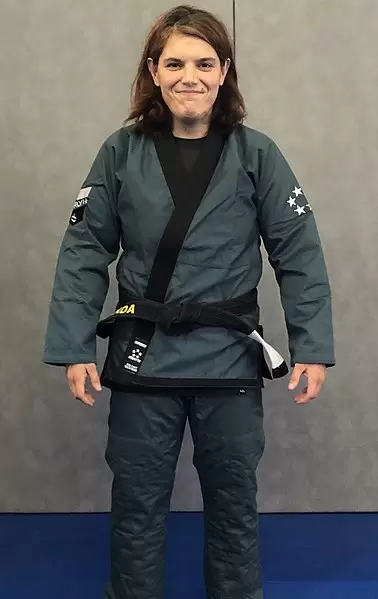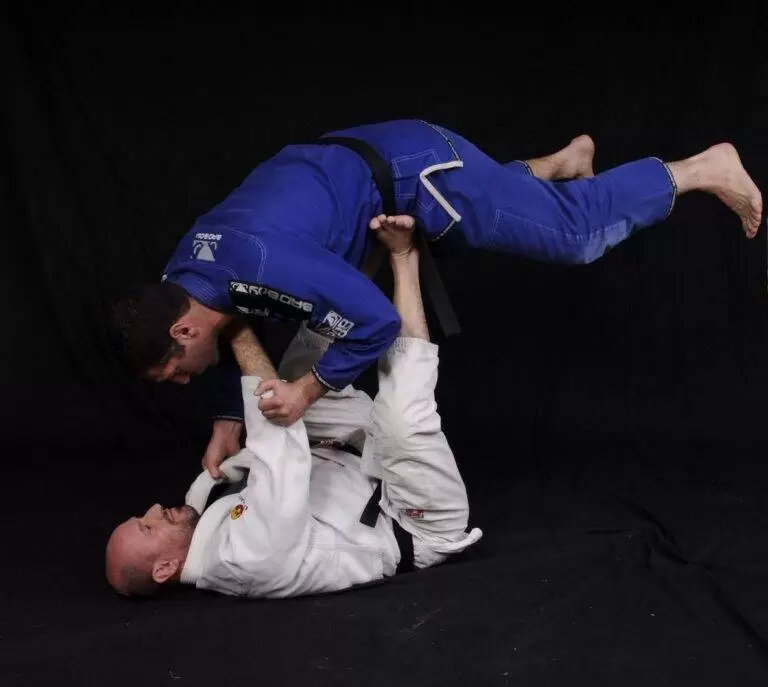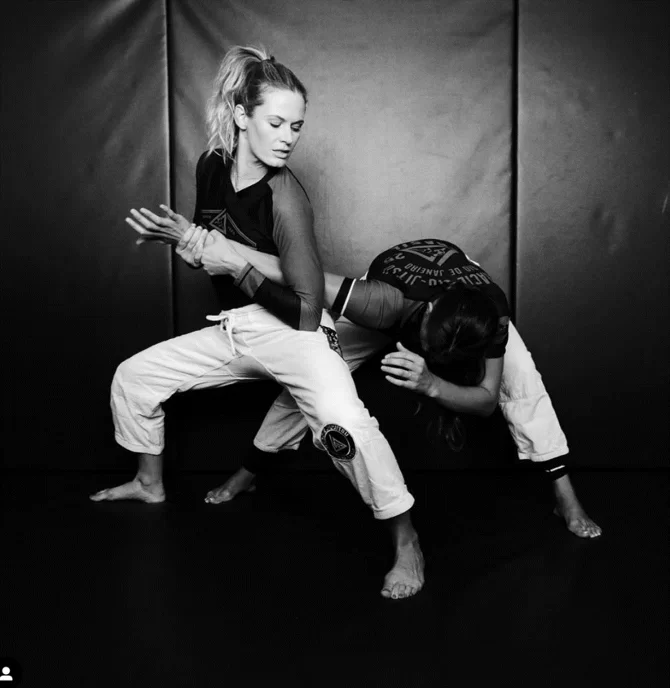Belt ranks in BJJ
Belt ranks in Brazilian Jiu-Jitsu (BJJ) are a system of colored belts used to indicate a practitioner’s level of skill and experience in the art. These ranks are represented by colored belts, with white being the lowest rank and black being the highest. In this article, we will delve into the history of BJJ belt ranks, provide a detailed explanation of each rank, and explore the average time it takes for a practitioner to advance through the ranks.

The History of Belt Ranking in BJJ
BJJ was developed by Carlos Gracie, one of the pioneers of the martial art, who was seeking a way to teach self-defense to people of all ages and sizes. Gracie was heavily influenced by the teachings of Mitsuyo Maeda, a Japanese judo practitioner who had immigrated to Brazil and taught Gracie’s older brothers the martial art. Learn more about the origins of BJJ here.
Gracie modified Maeda’s techniques and developed a system that emphasized the use of leverage and technique to overcome size and strength advantages. This system became known as Brazilian Jiu-Jitsu, and it quickly gained popularity in Brazil and around the world.
The original ranking (belt) system used by the Gracie family was loosely based on the Judo system but consisted of only three ranks: white, blue, and black. As BJJ spread to other countries, the belt system was modified and expanded to include additional ranks, resulting in the nine-belt system that is used today.
The Belt Ranks in BJJ
The vast majority of BJJ practitioners will go to either blue, purple, brown or black belt. Only students who have spent many years teaching, competing and contributing to the community may go on to be awarded a coral or red belt.
Below is a table explaining each belt rank in BJJ and the average time it takes for a practitioner to advance through the ranks:
White Belt
The white belt is the starting rank in BJJ and represents a beginner level of proficiency. At this rank, practitioners are introduced to the basic techniques of the martial art, including fundamental movements, escapes, and submissions. The average time it takes for a practitioner to advance from white to blue belt is 3-12 months, depending on the individual’s dedication to training and progression.
Blue Belt
The blue belt is the second rank in BJJ and represents an intermediate level of proficiency. At this rank, practitioners are expected to have a solid understanding of the basic techniques and are introduced to more advanced techniques, such as advanced submissions and guard positions. The average time it takes for a practitioner to advance from blue to purple belt is 2-3 years, depending on the individual’s dedication to training and progression. Check out this article for a more detailed breakdown on how long it takes to get a blue belt.
Purple Belt
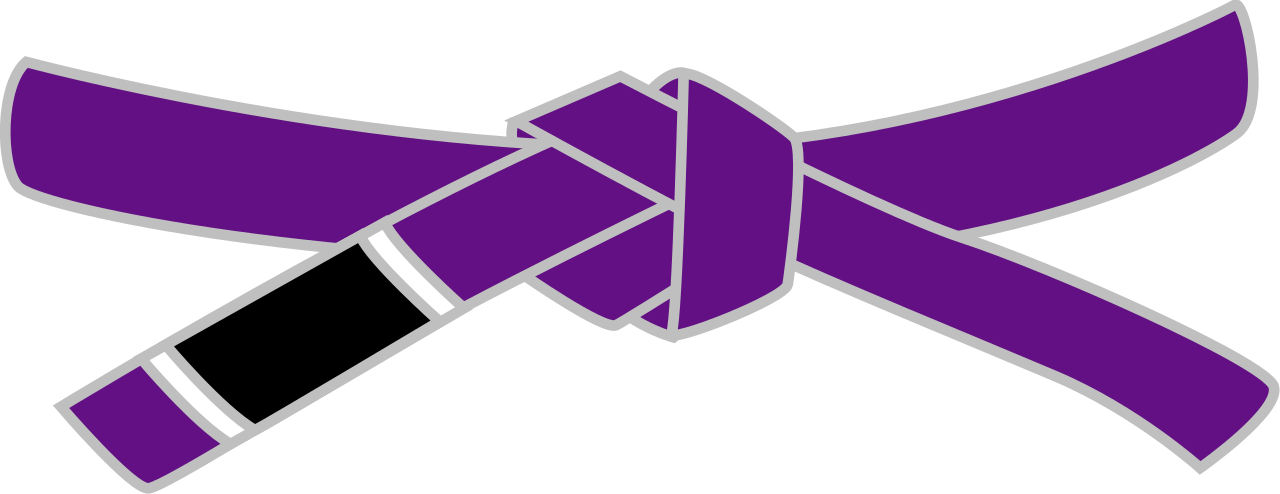
The purple belt is the third rank in BJJ and represents an advanced level of proficiency. At this rank, practitioners are expected to have a deep understanding of the techniques and be able to execute them with efficiency and effectiveness. The average time it takes for a practitioner to advance from purple to brown belt is 2-3 years, depending on the individual’s dedication to training and progression.
Brown Belt
The brown belt is the fourth rank in BJJ and signifies a high level of proficiency in the martial art. At this rank, practitioners are expected to have a thorough understanding of all the techniques and be able to teach them to others. The average time it takes for a practitioner to advance from brown to black belt is 1-2 years, depending on the individual’s dedication to training and progression.
Black Belt
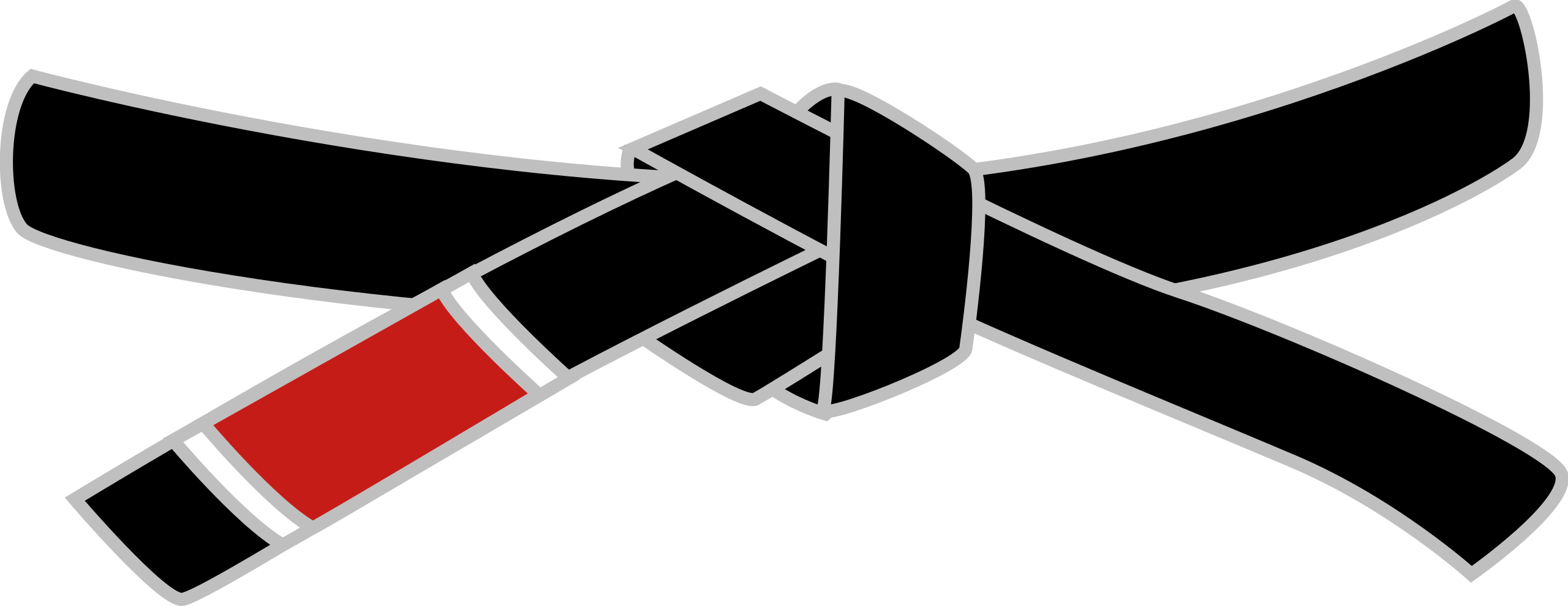
The black belt is the highest rank in BJJ and represents a master level of proficiency. At this rank, practitioners are expected to be experts in the martial art and be able to teach it to others with authority and proficiency. The average time it takes for a practitioner to advance from brown to black belt is 4-6 years, depending on the individual’s dedication to training and progression.
Coral Belt
In Brazilian Jiu-Jitsu (BJJ), the coral belt is a rank that is typically reserved for black belts who have achieved a high level of proficiency in the martial art and have made significant contributions to the development of BJJ.
Coral belts are often recognized for their expertise in BJJ and are often sought after as instructors and mentors. They are highly respected within the BJJ community and are considered to be among the elite practitioners of the martial art.
To be eligible for a coral belt, a practitioner must first attain the rank of black belt and earn three degrees, which are horizontal lines added to the belt below the buckle. The process of earning a coral belt is typically more selective and rigorous than the process of earning other belt ranks, and is typically reserved for practitioners who have dedicated their lives to the study and advancement of BJJ.
Red Belt
The red belt is often considered the highest honor that can be achieved in BJJ, and is a symbol of respect and recognition within the BJJ community. A practitioner who is awarded a red belt can be addressed as a “Grandmaster” of Brazilian Jiu Jitsu.
The red belt was originally introduced as a way to honor Grand Masters, who are practitioners who have dedicated their lives to the study and advancement of the martial art. Grand Masters are typically practitioners who have reached the rank of black belt and have been practicing BJJ for 50 years or more
It is important to note that the red belt is not an official rank in BJJ and is not recognized by all organizations or academies. Some organizations and academies do not recognize the red belt and consider the coral belt to be the highest rank that can be achieved in BJJ.
Average times spent at each belt
| Belt Rank | Average Time to Advance |
|---|---|
| White | 3-12 months |
| Blue | 2-3 years |
| Purple | 2-3 years |
| Brown | 1-2 years |
| Black | 4-6 years, then degrees are added |
| Coral Belt | Depends on experience and time spent at black belt |
| Red Belt | Reserved for exceptional contribution to the art |
It is important to note that the above mentioned time frames are just estimates and are not set in stone. Some practitioners may advance through the ranks more quickly, while others may take longer. The key is to focus on consistent training and improvement, rather than solely on achieving the next belt rank.
What are belt stripes?

In addition to the colored belts, BJJ belts also have stripes and degrees that indicate a practitioner’s progress and development within a specific rank. The stripes are small, horizontal bars that are sewn onto the belt and represent a certain level of achievement within a rank. The number of stripes a practitioner has on their belt is typically determined by their instructor and is based on the practitioner’s skill level, dedication to training, and overall improvement.
Degrees, on the other hand, are horizontal lines that are added to the belt below the buckle and represent the number of times a practitioner has been promoted to a specific rank. For example, a black belt with one degree would have a horizontal line below the buckle on their belt, indicating that they have been promoted to black belt once. Black belts can earn up to three degrees, after which they are eligible to be promoted to the rank of coral belt, which is the highest rank in BJJ.
In summary, stripes and degrees are additional indicators of a practitioner’s progress and development within a specific rank in BJJ. Stripes represent a certain level of achievement within a rank, while degrees represent the number of times a practitioner has been promoted to a specific rank.
Tips for progressing up the ranks in BJJ
Here are some key points to consider when working towards advancing up the ranks of BJJ belts:
- Train consistently: The most important factor in advancing through the ranks is consistently training and practicing BJJ. This means showing up to training sessions regularly, putting in effort and focus during training, and being open to learning and improving.
- Seek guidance from an instructor: It is important to have a good relationship with an instructor who can provide guidance and support as you progress through the ranks. Your instructor should be able to give you feedback on your progress and help identify areas for improvement.
- Master the techniques at your current rank: In order to advance through the ranks, it is important to have a strong foundation in the techniques at your current rank. This means being able to execute the techniques with proficiency and being able to teach them to others.
- Be a good training partner: Being a good training partner means being respectful, supportive, and willing to help others. It also means being open to feedback and criticism, as this can help you improve and advance through the ranks.
- Compete in tournaments: Competing in BJJ tournaments allows practitioners to test their skills and abilities against other practitioners, and can also serve as a motivator to continue training and improving.
- Maintain a positive attitude: Having a positive attitude and being open to learning and improving can go a long way in advancing through the ranks. It is important to stay motivated and dedicated, even when faced with challenges or setbacks.
Overall, advancing through the ranks of BJJ belts requires a combination of technical knowledge, physical ability, mental fortitude, and a strong work ethic. It is a journey that requires consistent training, a willingness to learn and adapt, and a strong support system.

Conclusion
In conclusion, advancing through the belt ranks in BJJ requires a combination of technical knowledge, physical ability, and mental fortitude. It is a journey that requires consistent training, a willingness to learn and adapt, and a strong support system. While the ultimate goal of BJJ is not to achieve the highest belt rank, the journey through the ranks can be a rewarding and fulfilling experience for practitioners.
- Buggy Choke: The Complete Guide - March 6, 2024
- Jiu Jitsu World League: Your Complete Guide - March 5, 2024
- How much do UFC referees make? A comprehensive guide - March 5, 2024

